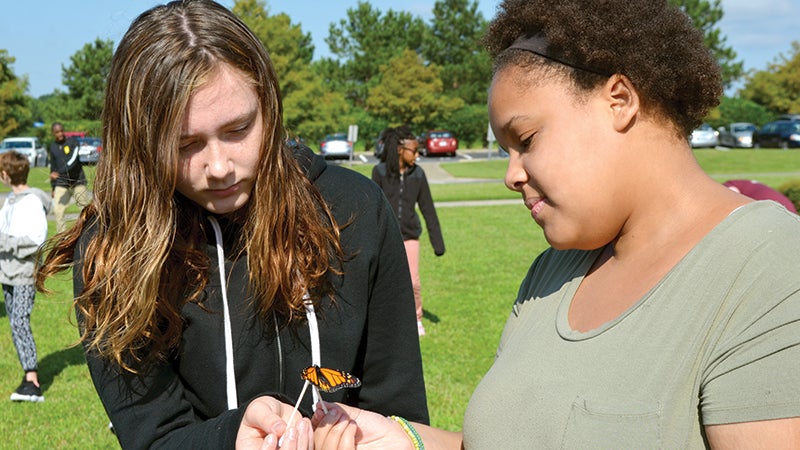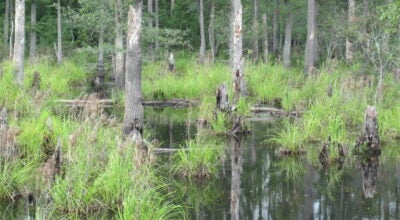Butterflies say goodbye to Smithfield
Published 10:40 pm Thursday, September 7, 2017

- Rebecca Daniels, 12, and Amiyah Naibauer, 12, both seventh-graders at Smithfield Middle School, take a closer look at one of the monarch butterflies released on Thursday.
Nadiya Head waited in line patiently for an envelope and a Q-tip dipped in honey water. A growing crowd of her fellow seventh-graders stood outside the entrance to Smithfield Middle School, all of them with identical Q-tips and envelopes.
Each envelope contained a live monarch butterfly. The 12-year-old could tell hers was a female, because it was missing a black dot on each of the hind wings.
The insect was about to be set free, along with more than 140 others.
“I hope that she makes it,” Nadiya said. “She’s moving around a lot, so she’s got a lot of energy.”
More than 100 seventh-graders at the school participated in the outdoor escapade organized by life science teacher Ellen Peterson and Ruth Meredith, an employee at McDonald Garden Center’s Hampton office and a self-proclaimed nature lover.
When Peterson was teaching Meredith’s son, Luke King, last school year, the two put together a project on bee pollination. Meredith proposed another project for the 2017 academic year that focused on another breed of pollinators.
“The overarching theme of life science is to set the connection with the living world with lessons that are connected to that world outside of the classroom,” Peterson said. “When we talk about pollination, they’ll remember the butterflies.”
Students learned how monarch butterflies fly from Mexico to as far north as Canada, clocking up to 250 miles in a day. They learned their physiology, breeding habits, and how they pollinate flowers and feed on the nectar.
“It’s cool that they hatch from an egg and turn into a butterfly in 30 days,” 11-year-old Lamontez Boone said.
The butterflies each had tags courtesy of Monarch Watch, an organization focused on the conservation of their populations. Habitat destruction and other factors have harmed the butterflies’ population numbers.
The tagged insects that return will be collected next year, and their data will be added to data on migration patterns and population statistics.
“It’s about enjoying their beauty, but we also want to take care of the environment so we have all of these things for future generations to enjoy,” Meredith said.
Some of the butterflies set loose on Thursday may make their long journeys south. The children laughed as some landed on their shirts and glasses. Many filled the air above their heads.
“This is not something you would ever get to do in science class,” Meredith said. “This is part of the hands-on, project-based learning that Smithfield likes to do.”
Amiyah Naibauer playfully named her butterfly May. She said enjoyed the experience and hoped for the best for her winged acquaintance.
“I’m sad my butterfly left, but it was still a success,” Amiyah said.






